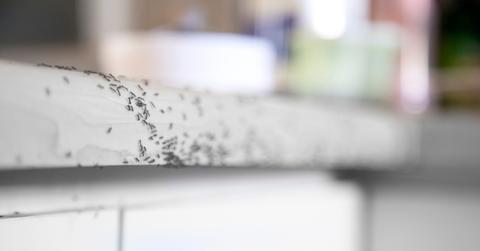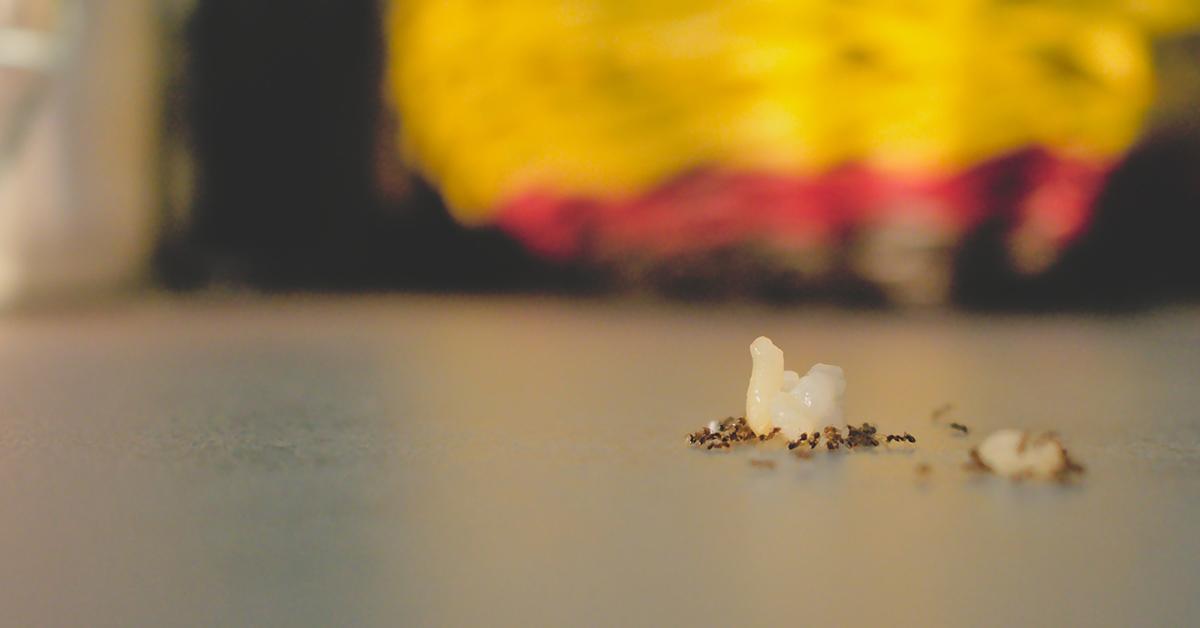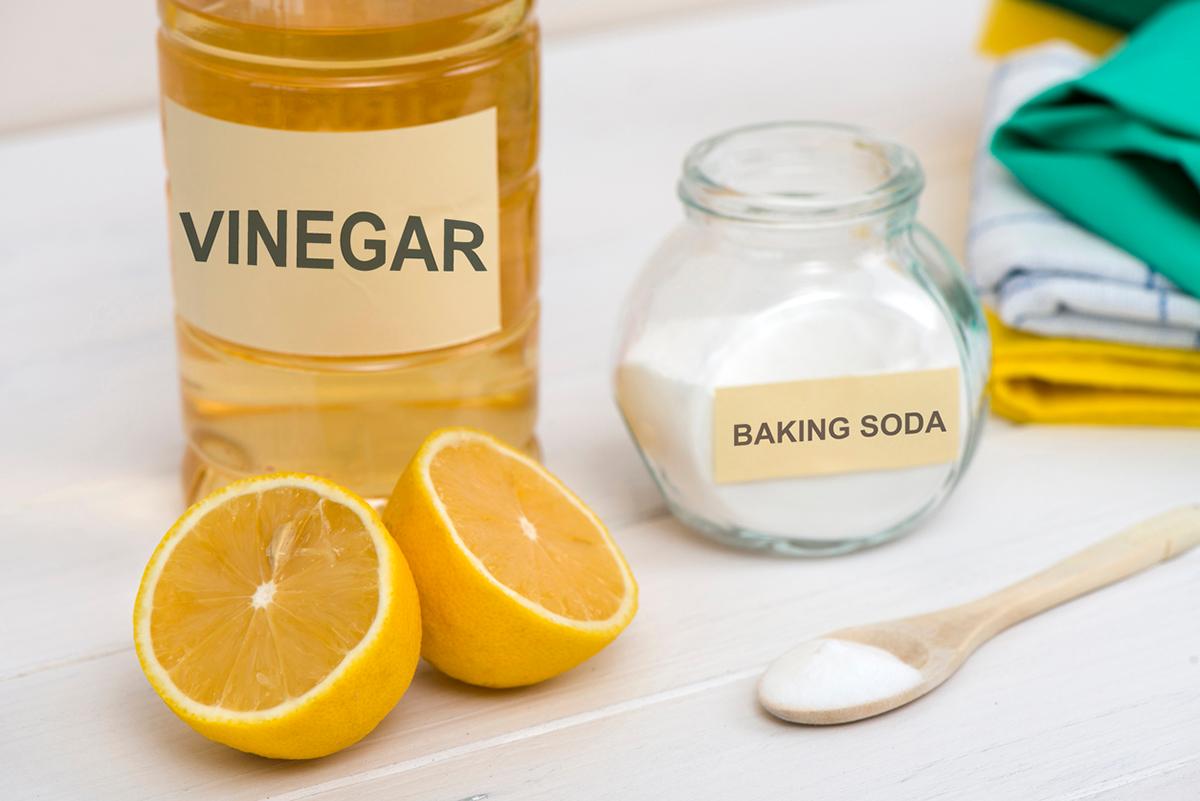How to Make Your Own DIY Ant Spray
Unfortunately, this year’s ants must not have gotten orders to stay in their own home!
Updated April 16 2020, 2:59 p.m. ET

The weather warming up means so many exciting things — hopefully a foreseeable end to the coronavirus outbreak, flowers blooming, and, eventually, summer beach days. But it could mean one not so positive thing, too: an influx in pests both inside and outside.
As the weather gets hotter, you may notice fruit flies, gnats, and even ants making their way (uninvited!) into your home. All three of these creepy crawlers are, well, creepy, but ants can be particularly annoying to get rid of. While some people may choose to eradicate bugs and other pests with traditional sprays laced with harmful chemicals, it’s totally understandable if you would prefer to treat your home with a safer bug spray. (Not to mention, during stay-at-home orders, we’re trying to make as few trips to the store as possible.)
Luckily, you can make a non-toxic, low-waste spray from the comfort of your own home. Ready to get your DIY on and get ants out of your house? Let’s get started.
Why do ants come into the house?

We may associate ants with infiltrating picnics, but they are so much peskier when they make their way indoors. In fact, ants are considered to be No. 1 nuisance pest in America, according to PestWorld.org. After all, the National Pest Management Association (NPMA) conducted a survey that found that kitchens are 96 percent vulnerable to ants and bathrooms are 88 percent vulnerable.
There’s a good reason that kitchens are the most popular area of the home to ants. These tiny insects are looking for food! Believe it or not, it’s not just food that ants are in search of. They also come into the house looking for water, too. If you leave food out on the counters or tables, tend to take a while to clean up spills, and store fruit outside of the fridge, your kitchen may be more susceptible to an ant infestation. Other factors like water buildup, faucet leaks, dishes left in the sink, and not rinsed-out drink containers in the recycling bin can also “invite” ants into the house.
According to Dr. Michael Bentley, entomologist and director of training and education for NPMA, “Ants have a sweet tooth, just like many of us, which leaves our kitchens particularly vulnerable to an infestation. In addition to the crumbs and spills we leave behind, our sinks provide a water source, which ants need to survive.”
Ants may venture into the bathroom because of leaks as well. Frequently check your toilet, sinks, bathtubs, and showers for leaks or drips, clean the bathroom with disinfectant often, and make sure none of your soaps, shampoo, conditioner, or body wash bottles are leaking.
How to make a natural DIY ant killer:
There are a few different ways to make your own natural DIY ant killer. If one of these ways doesn’t work for you, don’t worry. There are a few other alternatives to fall back on.
Baking Soda
Mixing equal parts baking soda and powdered sugar is one way to naturally kill ants with spray, as these two ingredients act like a one-two punch. The ants are attracted to the sugar, which they harvest and take it back to their nest. According to Arrow Termite and Pest Control, once the ants return to their nest, the baking soda dries out their bodies, ultimately killing them.
Chalk
It may sound like the stuff of your great-grandmother’s myths, but it’s actually true. Ants will not cross over a line of chalk. While it’s not a type of spray, it’s a line of chalk is actually a great alternative. Chalk actually disrupts an ant’s natural pheromone trail, which is why they avoid crossing it. However, if you choose to keep ants away with a chalk line, there’s a few things you have to know. First, you have to make sure you draw it in the right spot – between where they enter your home and the food source that they’re after. Second, you’ll have to redraw the chalk line somewhat regularly.
Dish Soap
You can also make a spray of what are some of the most basic ingredients of all time. Fill a spray bottle of equal parts warm water and liquid dish soap. You can spray this DIY natural spray right on the ants whenever you see them.
The soap-and-water mixture coats their bodies and actually suffocates them. Bonus: The soap also washes away the scent trail that ants leave behind so that the rest of the colony won’t be able to follow the trail.

Vinegar
Here’s another good spray option that only requires one ingredient. Like the chalk line, vinegar works to disrupt an ant’s pheromone trails, breaking down each ant’s communication with the rest of the colony. Add some vinegar to a spray bottle, then spray a circle around an active line of ants. Like the chalk line, they can’t get through, so they will wander around inside the vinegar circle. Eventually, they’ll die. Alternatively, you can also spray vinegar at the ants’ entry point.
Peppermint
Only one ingredient necessary — peppermint essential oil. Put it in a spray bottle, then spray around any potential ants’ entry points in the home: Windows, doorways, etc. It also keeps the house smelling peppermint-y fresh!
How to keep ants away:
If you see an ant or, unfortunately, already have an infestation, making a DIY natural ant killer should do the trick. But if you’re just trying to get ahead of the issue or keep ants from coming back again, you can do so by being extremely vigilant about cleaning in the kitchen and bathroom. Here are a few tips for keeping ants away:
Clean Up Right Away
We all know spills happen, but it’s important to clean up quickly, especially if the spill is of something sweet or greasy. As soon as a spill happens, wipe it up and use a disinfectant. Leaving spills over time only gives ants more of a chance to come.
Rinse Out Containers Before Recycling
Good on ya for recycling, but if you don’t wash out the containers or bottles before throwing them in the recycling bin, they could attract ants — plus, washing containers out means they are more likely to actually get recycled once they reach the recycling center.

Store Food Away
Whenever possible, try to store things away rather than on the table or countertops. Fruit bowls are cute, sure, but the fruit can over ripen quickly. If left there too long, it can attract ants, as well as other nasty pests like fruit flies or gnats. Store fruit in the refrigerator and put sweet things like syrup and honey in a pantry or cupboard. Make sure those sweet things are snapped shut tightly and that there is no lingering sticky residue on the cap or bottle.
Use Bay Leaves to Your Advantage
Pro tip: Bay leaves have a bitter smell that actually repels ants, so use this strong-smelling herb to your advantage. Store it in containers of flour or sugar to keep the ants (literally) at bay.
Clean Up After Your Pets
Pets are notoriously messy and even if you’re being vigilant around the kitchen, your pet’s food and drink bowl might be to blame for your ant infestation. Clean up any food leftovers or remnants around the bowl and make sure to wash out the bowls and clean them regularly.